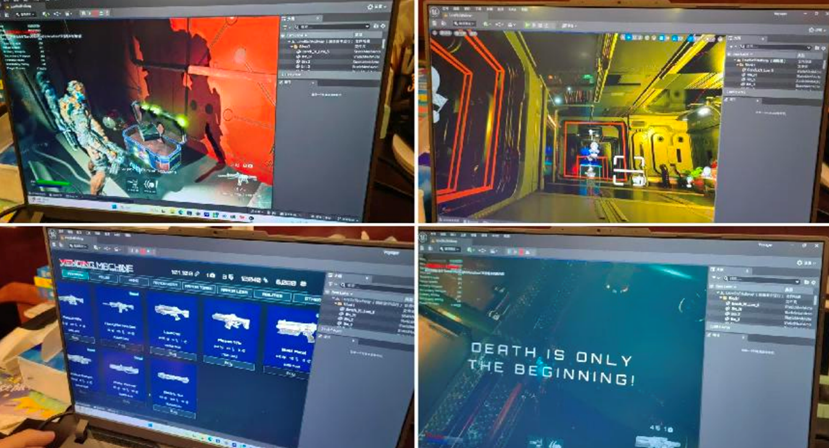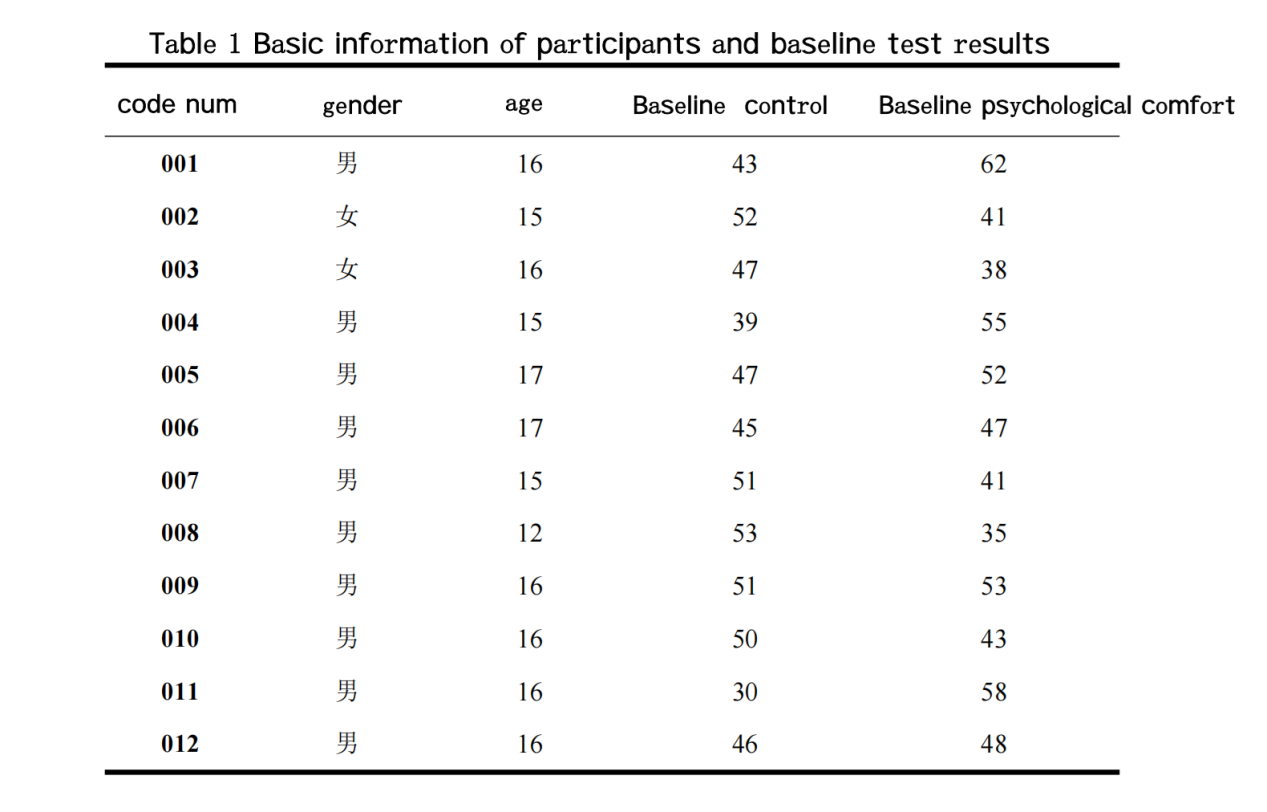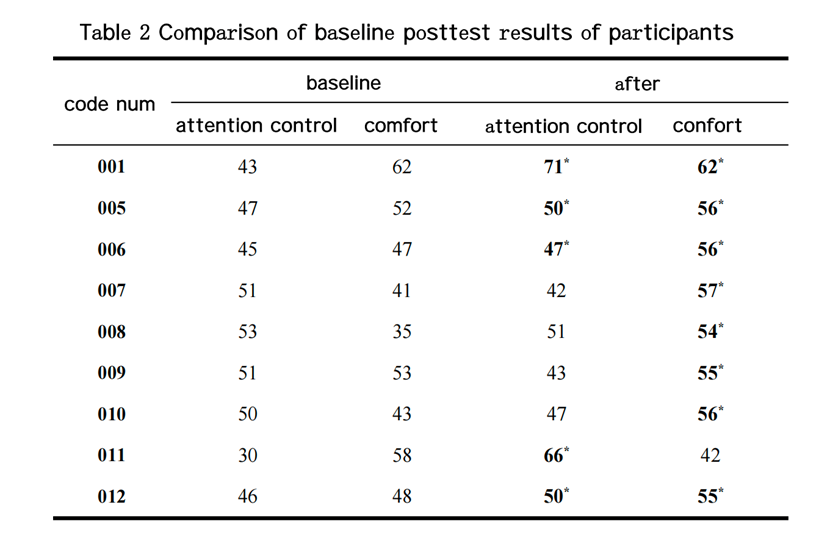Voyager - A Game for Attention Control and Psychological Comfort in Adolescents with Hyperactive Traits
Abstract
Adolescents with hyperactive traits often struggle in daily life. In recent years, this condition has been widely recognized as ADHD. To help improve attention control and psychological comfort, the author designed Voyager, a game specifically for adolescents with hyperactive traits.
This study follows a pre-test and post-test research approach. Voyager serves as the intervention, and its effects are evaluated using the Attention Control Scale (ACS) and the Psychological Comfort Subscale from the General Comfort Questionnaire (GCQ). Results show that after playing Voyager, participants’ attention control improved by an average of 12.27%. Their psychological comfort increased by 12.30%. These findings suggest that Voyager can effectively enhance focus and emotional well-being in adolescents with hyperactive traits.
Adolescents with hyperactive traits often struggle in daily life. In recent years, this condition has been widely recognized as ADHD. To help improve attention control and psychological comfort, the author designed Voyager, a game specifically for adolescents with hyperactive traits.
This study follows a pre-test and post-test research approach. Voyager serves as the intervention, and its effects are evaluated using the Attention Control Scale (ACS) and the Psychological Comfort Subscale from the General Comfort Questionnaire (GCQ). Results show that after playing Voyager, participants’ attention control improved by an average of 12.27%. Their psychological comfort increased by 12.30%. These findings suggest that Voyager can effectively enhance focus and emotional well-being in adolescents with hyperactive traits.
Keywords: Teenagers; Hyperactive traits; Game intervention; Attention control; Psychological comfort
1. Introduction
ADHD is characterized by attention deficits, hyperactivity, and impulsivity, as described in the Diagnostic and Statistical Manual of Mental Disorders, Fifth Edition (DSM-V). The condition affects approximately 7.2% of the global population (Thomas, 2015). Research suggests that ADHD is nearly three times more common in males than in females. It often persists into adulthood, leading to difficulties in work and social life (Drechsler, 2020).
Adolescents with ADHD experience both cognitive and emotional challenges. Studies indicate that they frequently struggle with academic performance and social interactions. Their attention deficits and hyperactive behaviors often lead to frustration and negative experiences (Libutzki, 2023). ADHD also has a high comorbidity rate, frequently occurring alongside conduct disorders, depression, and anxiety (Sjöwall, 2017).
However, not all adolescents exhibiting hyperactive behaviors meet the clinical criteria for an ADHD diagnosis. Many share similar struggles with focus, emotional regulation, and academic difficulties. In this study, they are referred to as hyperactive traits adolescents. Early intervention is essential. Research confirms that behavioral training at an early stage can significantly improve outcomes (DuPaul, 2011; Feil, 2016). Despite this, most existing interventions focus on younger children and lack engaging elements for teenagers. This study aims to fill this gap by developing a game-based intervention—Voyager—to support adolescents with hyperactive traits and contribute to early ADHD intervention.
Adolescents with ADHD experience both cognitive and emotional challenges. Studies indicate that they frequently struggle with academic performance and social interactions. Their attention deficits and hyperactive behaviors often lead to frustration and negative experiences (Libutzki, 2023). ADHD also has a high comorbidity rate, frequently occurring alongside conduct disorders, depression, and anxiety (Sjöwall, 2017).
However, not all adolescents exhibiting hyperactive behaviors meet the clinical criteria for an ADHD diagnosis. Many share similar struggles with focus, emotional regulation, and academic difficulties. In this study, they are referred to as hyperactive traits adolescents. Early intervention is essential. Research confirms that behavioral training at an early stage can significantly improve outcomes (DuPaul, 2011; Feil, 2016). Despite this, most existing interventions focus on younger children and lack engaging elements for teenagers. This study aims to fill this gap by developing a game-based intervention—Voyager—to support adolescents with hyperactive traits and contribute to early ADHD intervention.
2. Methodology
2.1 Research Process
This study follows a structured research design, as illustrated in Figure 1.
Figure 1. Research Process Flowchart
Ethical approval was obtained from the institutional review board. All participants and their guardians provided written informed consent.
2.2 Measures
Attention ControlThe Attentional Control Scale (ACS) (Derryberry & Reed, 2002) was used. This scale consists of 20 items rated on a 4-point Likert scale (1 = “Almost Never” to 4 = “Always”). It measures:
- Attention Focusing (e.g., “I can quickly switch from one task to another.”)
- Attention Shifting (e.g., “It is hard for me to concentrate when I am anxious.”)
Psychological Comfort
The Psychological Comfort Subscale from the General Comfort Questionnaire (GCQ) (Zhu et al., 2006) was used. This 10-item scale also employs a 4-point Likert rating (1 = “Strongly Disagree” to 4 = “Strongly Agree”). It assesses emotional well-being, with items such as “I feel calm and relaxed in most situations.” Higher scores indicate greater psychological comfort.
2.3 Procedure
A single-group pretest-posttest design was implemented. The study followed these steps:- Baseline Assessment: Participants completed the ACS and GCQ questionnaires before the intervention.
- Game Intervention: Participants played Voyager in three 30-minute sessions over one week. The game incorporated:
- Dynamic Difficulty Adjustment (DDA): Real-time task adaptation based on performance to maintain engagement without frustration.
- Cognitive Training Modules: Tasks requiring sustained focus (e.g., timed target shooting) and impulse control (e.g., delayed rewards).
- Relaxation Phases: Guided breathing exercises and ambient soundscapes between levels.
- Posttest Assessment: Participants repeated the ACS and GCQ immediately after the intervention.
2.4 Statistical Analysis
SPSS 23.0 was used for analysis. Paired-sample t-tests compared pretest and posttest scores for attention control and psychological comfort. Effect sizes were calculated using Cohen’s d. Significance was set at p < 0.05. Three participants withdrew mid-study, leaving a final sample of N = 9.3. Results and Discussion
3.1 Results Analysis
Table X and Figure X present the pretest and posttest results.- Attention Control: Participants showed an average increase of 12.27% in ACS scores.
- Psychological Comfort: GCQ scores improved by an average of 12.30%.

Figure X. Pretest vs. Posttest Comparisons
3.2 Discussion

Future Research Directions
- Expanding Sample Size: Future studies should include larger, more diverse participant groups.
- Long-Term Effects: It is necessary to assess whether the benefits of Voyager persist over time.
- Comparative Analysis: Testing Voyager against other intervention methods could provide deeper insights into its effectiveness.
- Individual Variability: Players’ responses to game difficulty adjustments varied. Adaptive AI could further refine task personalization.
- Sustained Engagement: Maintaining long-term motivation requires additional reward mechanisms, such as social features or progress tracking.
4. Conclusion
This study developed Voyager, a game designed to support adolescents with hyperactive traits. By incorporating cognitive training, adaptive difficulty, and relaxation mechanics, the game enhances attention control and psychological comfort. The findings demonstrate Voyager’s potential as an engaging intervention. Future research should explore broader applications and refine its mechanics.